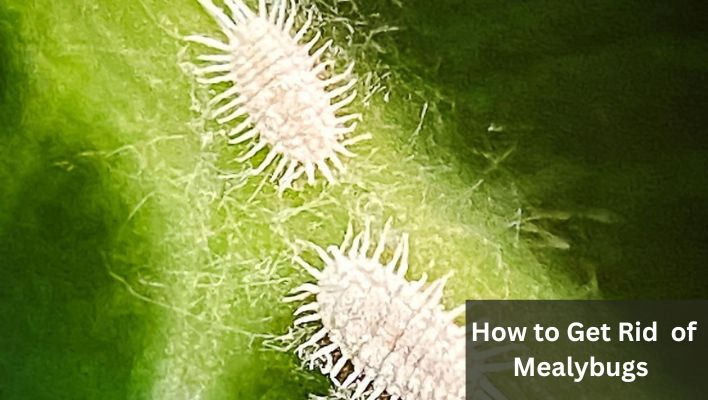Mealybugs can be a real pain to deal with. They are one of the smallest creatures on earth, but they can cause much damage if they’re not treated in time. If you find mealybugs on your plant, how do you get rid of them?
They also look a bit like white fleas and are very small. Their tiny bodies are soft-bodied; they will not bite and do not carry diseases. They can be found in most indoor flora, although they prefer to live in the dry, warm areas of your house.
They’re small, pesky, and not very good at getting by independently. But sometimes, knowing what causes or how to eliminate them is hard.
If you have mealybugs on your plants, then it’s essential that you find out how to get rid of them, as they can spread quickly.
What Mealybugs Look Like
Mealybugs, also called the cottony cushion scale, are a type of insect that can cause severe damage to your plants. Mealybugs are small, white insects that feed on plant sap.
The main characteristic of mealybugs is the white, fuzzy wax covering their bodies. Mealybugs can be found in indoor and outdoor plants and shrubs. The most common species of mealybug is the Indian meal moth.
Mealybugs are small, translucent, wingless insects with a cottony or woolly appearance. They can be found on plants in the landscape, in pots and garden containers, and on various ornamental plants.
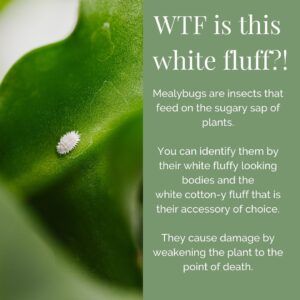
They usually appear on the leaf’s undersides, but they may also be seen on the upper surfaces of leaves and stems. These insects tend to congregate on older leaves and stems and feed on resin from trees and shrubs.
Mealybugs reproduce by parthenogenesis (without sexual reproduction). The female lays eggs that hatch into nymphs (smaller versions of adults). A female can produce 100-200 eggs over her lifetime.
Mealybugs are known for causing severe damage to various crops, including tomatoes, potatoes, peppers, corn, beans, tobacco, and many more. So if you see any of these symptoms on your plants, please take action immediately.
Causes Mealybugs on Plants
Mealybugs tend to appear in large numbers and can be quite bothersome, as they cause damage to plants by sucking nutrients from them.
They also spread disease when they come into contact with other plants or people who touch them.
This type of pest is commonly found in soil and plants but can also be carried into your home on clothing, shoes, and other items.
When these fungi are present in your garden, they’ll start feeding off plant sap and produce honeydew—a sticky substance that looks like damp sawdust.
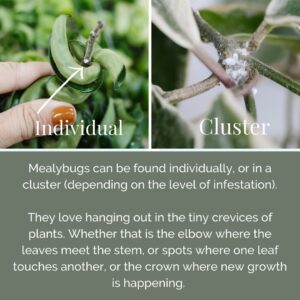
If you don’t get rid of them quickly enough, they’ll spread through your plants and cause damage: the leaves will turn yellow or orange before eventually dying off completely.
Here are some of the most common causes of mealybugs:
- Improper plant spacing (too close together)
- Inadequate drainage (especially during rainy weather)
- Overwatering (more than 1 inch per week)
- The presence of a fungus – this is known as a sooty mold.
- Insects that feed on the plant sap may also be responsible for mealybug infestations.
- Mealybugs prefer to infest plants in shaded areas, where less light is available to produce their food source.
How to check your plant for mealybugs
Mealybugs are tiny insects that feed on the sap of plants and cause damage to leaves, flowers, and stems. They can be found on various plants, including tomatoes, peppers, and houseplants. There are many different types of mealybugs, but they all have the same life cycle and need a similar environment to survive.
To check your plant for mealybugs, you can use a magnifying glass to look at the underside of the leaves. You will notice white waxy deposits on the underside of the leaves, which will be filled with tiny holes (the sign of mealybugs).
You should also look for small greyish-white spots on lower leaf surfaces caused by these insects feeding on plant sap. These spots often turn black as they dry out from rain or irrigation systems’ lack of moisture over time (known as ‘sooty mold’).
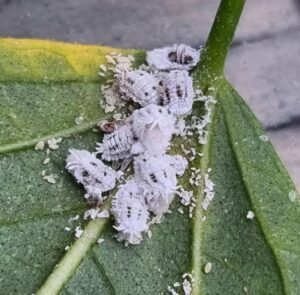
It’s easy to check your plant for mealybugs. Here’s how:
- Look at the bottom of the leaves. You’ve got mealybugs if you find any clusters of white, fuzzy things that look like cotton.
- The plants are not growing properly (on occasion, they may be smaller than normal)
- Check for white powdery substance or brown spots on the stems and leaves as well; if you see any of these, it’s probably time to get some help from a professional gardener or an exterminator.
- Excessively soft, brittle leaves with a white fuzzy coating
- Look for white spots or dots on the leaves, which are about 1/2″ in diameter.
- If all else fails, take a very close look at your plant’s roots; the part of its body that connects directly with the soil (and therefore can’t move around much). Check for tiny white specks or clusters of them in those roots (which means you have mealybugs).
Best insecticide for mealybugs
There are various ways to get rid of mealybugs, and one of the methods is using pesticides or insecticides that have been proven effective in killing these pests.
Using this method will save you time and the doubt of trying different methods, which can be daunting. Without any further ado, below are some of the best pesticides to combat mealybugs and make your plants free from diseases.
Bonide – Insect Control Systemic Granules
Bonide offers an Insect Control Systemic Granule that is designed specifically for mealybugs. These granules contain piperonyl butoxide, which kills off mealybugs on contact and prevents them from returning.
They’re made up of a combination of insecticidal soap and pyrethrin, a naturally occurring substance derived from chrysanthemums. They work by penetrating the scales on the mealybug and killing it off.
This insecticide is safe for kids and pets and gentle enough to use on plants that you don’t want to get hit by insecticides like this. The granules are effective against varroa mites, spider mites, aphids, scale insects, leafhoppers, mealybugs, and whiteflies.
Safer Insect Killing Soap Concentrate
The Safer Insect Killing Soap Concentrate is a great insecticide for mealybugs because it kills them on contact. It’s also safe for humans and animals, and you can use it around your house. The soap will kill the mealybugs by dissolving their exoskeletons.
This soap concentrate comes in handy when you want to treat the insects on your fruits or vegetables, indoors or outdoors. This safe and natural product also leaves no sticky residue, making it perfect for plant use.
This insecticide is available in pump spray bottles for convenient spraying and ready-to-use packets for use in outdoor containers or clean equipment.
Monterey Horticultural Oil Concentrate Insecticide/Pesticide
Monterey LG 6299 Horticultural Oil contains insecticides and fungicides that target different insects. With Monterey’s patented, the liquid concentrate is specifically designed for the protection of roses and ornamental landscape plants against mealybug infestations.
Monterey horticultural oil concentrate insecticide or pesticide is a powerful insecticide that can treat mealybug infestations in your home. This product is made from 100% vegetable oil, which contains no animal-derived ingredients or additives. It’s also suitable for indoor plants, such as potted houseplants and hanging baskets.
This insecticide has a wide range of applications, including managing mealybugs on ornamental plants, trees, and shrubs like azaleas and rhododendrons; controlling aphids on fruit trees like apples, pears, and plums; and getting rid of whiteflies on roses, petunias, and other flowering annuals.
It kills insects through contact with the plant itself or by ingesting toxic materials inside their bodies. If you’re looking for an effective insecticide treatment for mealybugs in your home or garden this season, look no further than Monterey horticultural oil concentrate insecticide or pesticide.
How to get rid of mealybugs on plants
Here are the various ways to get rid of mealybugs naturally. If your plant is affected by the mealybug, then the first thing you should do is check for mealybugs on the leaves and stems of your plant.
You can use a magnifying glass or a hand lens to help you find them. If you find any mealybugs, it’s time to treat your plant with a pesticide. Below are the various ways of getting rid of mealybugs from your plants.
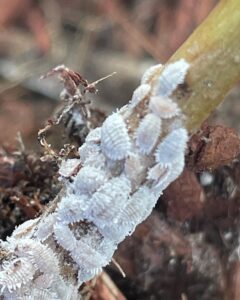
Dish Soap Solution
We recommend using dish soap as a first-line treatment for mealybugs because it’s gentle, effective, and safe for you and your plant. It’s also non-toxic, so if you get some on yourself while treating the problem with dish soap, it won’t harm you.
You can also use dish soap in a spray bottle to treat larger areas of the plant or garden. What dish soap does is break down the waxy coating on the mealybugs’ bodies so that predators can eat them. It also breaks down their eggs so that they don’t hatch into more adults.
Make your solution by mixing a cup of dish soap with one gallon of water and pouring it into a spray bottle. Spray the mealybugs directly and then rinse off after some minutes.
Use insecticide soap
Insecticide soap is a chemical solution that kills insects when they touch it. You can buy this at most garden supply stores or online, or you can make it yourself by mixing water with the insecticide brand of your choice (see below).
You can use soap directly on the mealybug infestation or make a dip for your plants. You’ll want to ensure the plant has been well watered, then cover it with insecticidal soap so it can soak in. The soap will kill any mealybugs it touches and prevent future infestations on your plants.
Remove with a cotton swab.
You can easily get rid of mealybugs by using a cotton swab. Just rub the swab across the plant’s leaves and stems from dislodging any mealybugs you find there.
You’ll need to use a cotton swab to scoop them up from the underside of leaves or stems where they live (usually near leaf joints or at the base of the plant). You can then place them into a jar with some water so they can drown before they dry out completely (they will die if left dry).
If you see more than one mealybug on one plant, you should repeat this process until all of them are gone.
Use Neem oil
One of the best ways to eliminate mealybugs on plants is to use Neem oil. The oil is safe for humans, pets, and the environment, but it’s also very effective at killing these pests. Neem oil is a natural pesticide that kills many different types of pests.
Mix two tablespoons of neem oil with one quartz of water and then spray it onto the plant. You want to make sure that all of the leaves that might be infested are covered with this treatment.
Once the Neem oil has dried on your plants, you may want to repeat this process every few days until you’ve removed all signs of mealybugs from your garden.
Mist with a citrus solution
Citrus fruits are known for their ability to repel and kill pests and will make them fall off their hosts.
You can use either lemon or lime juice and mix it with water in a spray bottle. The amount of citrus oil you use depends on the size of your plant and how much damage has been done to it by the pests. You should aim for spraying every week or two during the spring and summer.
Mix half a cup of water with one tablespoon of lemon or lime juice and spray it over the affected leaves. Let it sit for five minutes, then rinse the leaves with water and let them dry completely before watering again.
Isopropyl alcohol
Isopropyl alcohol is an effective way to get rid of mealybugs on plants. It’s also a safe way to treat the plant, but it could cause damage if not used properly.
Isopropyl alcohol works best if you apply it directly onto the leaves where you see them actively feeding instead of spraying it over a large area because it will not be as effective this way (but it will still kill off most of them).
To use Isopropyl alcohol to get rid of mealybugs on plants:
- Start by filling a spray bottle with Isopropyl alcohol.
- Spray the plant with the alcohol until it’s saturated.
- Wait for at least two hours before watering your plants again.
Use diatomaceous earth.
Diatomaceous earth is a natural product used since ancient times as an insecticide. It breaks down and removes the outer layers of the mealybug’s exoskeleton, which eliminates it from your garden or farm. You can use it in several ways:
- Sprinkle diatomaceous earth around the base of your plants to keep these pests away.
- Spray your plants with water if they have been infested with mealybugs. This will kill any remaining insects and prevent new ones from coming in through wounds on the plant’s leaves or stems where they’ve been feeding on sap or other liquids which can be absorbed through their bodies and into their bodies – resulting in death from dehydration or starvation.
Fill a spray bottle with water and two tablespoons of diatomaceous earth solution. Shake well before using it on your plants. Read more about using diatomaceous earth as a pesticide.
Apply cinnamon
Cinnamon oil works very well as an insecticide against mealybugs because it contains a compound called thymol, an effective repellent against them.
You can sprinkle it on your plant’s leaves or the mealybug itself. The smell should repel the mealybugs for about two weeks, at which point you’ll need to reapply. Or spray your garden with a cinnamon solution by mixing it with water.
If you want to use it as a spray:
- Add about two teaspoons of cinnamon oil and 1 cup of water.
- Stir the mixture with a clean spoon until the cinnamon is dissolved.
- Spray this solution over your plants, and let it sit for one hour before watering again.
Use Horticultural oils
Horticultural oils contain natural oils that repel mealybugs and other insects. You can purchase these oils at most garden stores or online, which are relatively cheap compared to other pest control methods.
You can apply the oil directly to the plant or spray it with a garden hose. Mix one part of horticultural oil with two parts of water in a spray bottle. Then spray this mixture onto the plant you want to get rid of the mealybugs on.
Use Baking Soda
Baking soda is an effective treatment for mealybugs because it helps remove the eggs from the plant and kills the adults already infesting your foliage. It also helps prevent new generations of mealybugs from forming in future seasons by killing off mature mealybug colonies.
Make a 1/2 gallon of water solution with 1 cup of baking soda. Mix the solution well and apply it to the mealybug infestation. The solution will also kill any other insects or pests that may be present in the area.
Attracts Ladybugs
Ladybugs love mealybugs because they are nutritious and sweet. Ladybugs can eat the mealybugs in their larval stage when they are most susceptible to predation from other predators.
The mealybug does not reproduce during this stage, so the number of mealybugs that ladybugs can eat is limited.
If you want to attract ladybugs to your plants, make sure you plant various flower types and keep them well-watered. To attract beneficial insects into your garden, try planting flowers in your meadow area near your vegetable garden to help control pests such as aphids and caterpillars.
There are a number of plants that attract beneficial insects, but the most common ones are:
- Garden sage (Salvia officinalis)
- Sweet alyssum (Lobularia maritime)
- Catnip (Nepeta cataria)
- Basil (Ocimum basilicum)
- Borage (Borago officinalis)
- Parsley (Petroselinum crispum)
- Lemon balm (Melissa officinalis)
- Thyme (Thymus vulgaris)
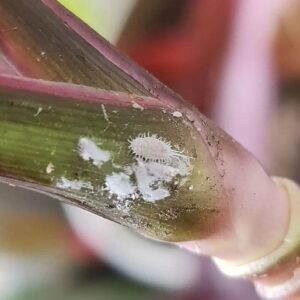
Use Companion Planting
Companion planting is a great way to get rid of mealybugs on plants because it helps keep your garden healthy and happy. Companion planting uses the natural abilities of different plants to come together to create a healthy environment for your entire garden.
This can help reduce the chances of unwanted pests from attacking your plants, so you have more time to focus on other aspects of gardening instead of worrying about pests invading your yard or garden.
This is because the plants used as companions are known to repel mealybugs. Some examples of companion plants include:
- Garlic and onions
- Chives and mints
- Lemon grass or geraniums
- Marigolds and nasturtiums
How to prevent mealybugs
Mealybugs are a common problem in the home. There are many ways to prevent mealybugs from invading your home, but if you have already been overrun with them, there is no need to panic.
Prevention is key. Mealybugs thrive when conditions are damp and warm, so keeping an eye out for dampness and high humidity can help keep them at bay. Below are the various ways of preventing mealybugs from infesting your plants
- Clean up debris around your plants. If there’s a lot of debris, it can provide mealybugs shelter and make killing them harder.
- Also, remove any weeds around your plants.
- Don’t over-fertilize; mealybugs thrive in nutrient-poor soil.
- Keep your soil moist but not soggy (water in the morning and evening). Keep your plant’s soil dry. If a plant is wet, mealybugs can thrive and get away with infecting other plants.
- Rotate your plants so they get a different treatment. Mealybugs tend to like warm temperatures, so if you’re rotating your plants through a greenhouse or in a room with high humidity, you’ll help prevent them from growing too quickly, which will stop them from developing into adult mealybugs and spreading their spores around.”
- Clean your home and garden regularly. Things like pet fur, dust mites, and mold can trigger the growth of these pests. Dust mites thrive in warm, humid environments (like a bathroom).
- Use barrier sprays and powders around plants to keep them away from insects that are likely to carry mealybugs. You can also use preventive sprays on your clothes before going out or treating your bedding when you get home from work.
